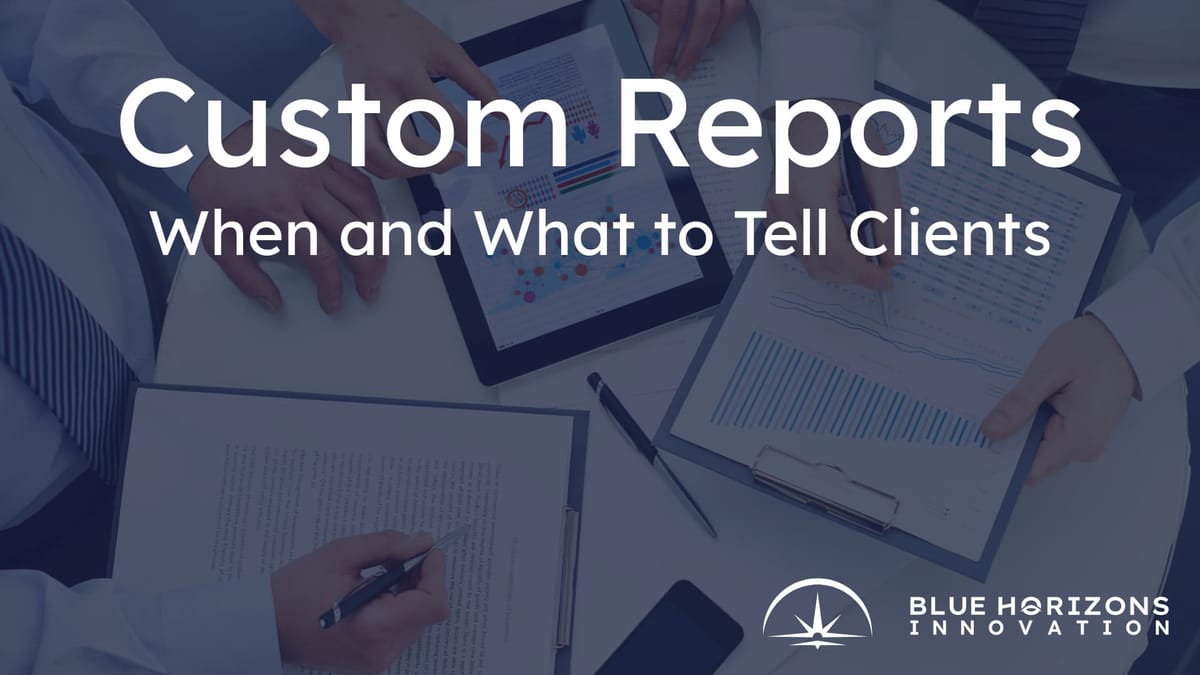Custom Reports: When and What to Tell Clients
Learn how to customize digital marketing reports for clients, including when to update them, what to include, and how to tailor insights to their needs.

Keeping clients informed is a crucial part of digital marketing. However, not all clients need the same updates, and the frequency and content of reports should be customized to their needs. A well-structured reporting strategy builds trust, showcases progress, and ensures clients stay engaged without feeling overwhelmed. Here’s how to determine when and what to report.
Determining the Right Update Frequency
Different clients have different expectations when it comes to updates. Here’s a general guide:
- Weekly Reports – Best for clients running high-budget, short-term, or time-sensitive campaigns such as PPC or seasonal promotions. These updates should focus on key metrics, ad performance, and any immediate optimizations.
- Biweekly Reports – Suitable for clients who want regular insights without excessive detail. This frequency works well for social media, email marketing, and SEO campaigns in the early stages.
- Monthly Reports – Ideal for long-term strategies like SEO, brand awareness campaigns, and content marketing. These reports should provide a comprehensive overview of progress, trends, and next steps.
- Quarterly Reports – Best for clients with a long-term vision who only need high-level insights. These should focus on major performance trends, ROI, and strategy adjustments.
What to Include in Custom Reports
Each client values different data points, but here are the key elements that should be considered:
1. Performance Metrics
Provide clear insights into campaign success. Focus on:
- Website traffic, bounce rates, and conversions
- Ad spend vs. return on investment (ROI)
- Engagement rates across social media platforms
- Email open and click-through rates
2. Key Takeaways & Insights
Numbers mean little without context. Explain:
- What’s working well and why
- Challenges or underperforming areas
- Adjustments made and their impact
3. Actionable Next Steps
Clients appreciate knowing what comes next. Include:
- Recommended optimizations
- New opportunities based on data trends
- Any required client input
4. Visual Representations
Graphs, charts, and simple infographics make complex data digestible and engaging.
Tailoring Reports to Each Client
Understanding the client’s level of involvement and marketing knowledge helps determine how detailed reports should be:
- Hands-on clients – Prefer frequent updates with detailed explanations.
- Big-picture clients – Need concise, results-driven insights.
- Data-driven clients – Expect in-depth reports with advanced analytics.
Customizing client reports ensures they receive relevant, actionable insights without unnecessary information overload. By aligning reporting frequency and content with their goals, digital marketers can maintain transparency, foster trust, and keep campaigns on track for success.





